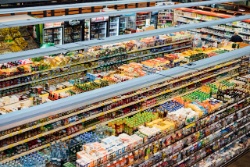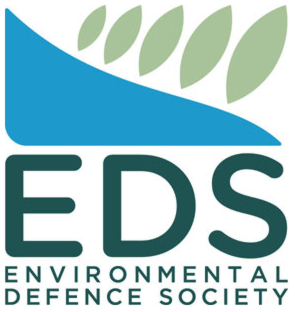Farah Hancock, Data journalist, In Depth
Why is New Zealand plagued with fires involving lithium-ion batteries, and what's happened to product stewardship regulations for e-waste, including the lithium-ion batteries within laptops and mobile phones?
In mid April, the Abilities Group recycling premises on Auckland's North Shore was engulfed in flames. Fire and emergency staff battled the blaze overnight. At one point two firefighters were stranded 10 to 15 metres mid-air when their truck malfunctioned, leaving them stuck in the basket at the top of the ladder, getting showered with burning embers.
Neighbours of the suburban recycling centre were told to stay inside and close their windows to avoid toxic clouds of smoke. Two nearby beaches were closed due to potential toxic run-off contaminating the sea.
The cause of the fire is under investigation, but speculation from a Fire and Emergency staff member was the culprit could be lithium-ion batteries.
Two weeks later a fire broke out in a scrapyard in the Auckland suburb of Ōtara. Again, lithium-ion batteries were suspected.
Until investigations are complete, we can't say for sure lithium-ion batteries caused the blazes. However, data collated by Fire and Emergency New Zealand (FENZ) suggests the number of fires caused by these have more than doubled since 2020 growing from 51 in 2020 to 120 in 2024. So far this year 42 fires have been related to batteries
The increase is due to the proliferation of the batteries, which are often found in devices which can be charged, such as mobile phones and laptops. They are also used in power banks, vapes, e-scooters, e-bikes and power tools.
If damaged, defective or used incorrectly, these batteries can overheat, catch fire, and even explode.

They're so combustible outdoor survival expert Bear Grylls used the battery from a waterlogged phone on his television show to start a fire. "As soon as I cut into the battery, that's going to expose the lithium to the oxygen and that mix of spark heat and oxygen is going to create fire," he tells the audience. A few cuts later white smoke jets out of the battery, and the handful of tinder he's prepared bursts into flames.
This propensity for rapid combustion means batteries thrown in with regular rubbish, then later crushed or damaged, can become flashpoints for infernos. This is why fires at scrap yards and inside rubbish trucks have become more commonplace.
So, what are we doing?
Keeping batteries out of places where they're likely to get damaged - like landfill or scrap yards - is one way to reduce fires.
There's a push to make producers take more responsibility for the products they create, especially when the disposal can cause issues.
This might mean educating the public on battery disposal and ensuring there are enough convenient places to stop the batteries ending up in rubbish bins, and a process to safely store, transport and recycle the returned batteries.
In some cases companies voluntarily opt to provide the public with options for returning goods when they reach their end of life, but in 2020 moves were made to make schemes compulsory for a range of problematic items.
E-waste joined tyres, refrigerants and synthetic gases, farm plastics and agrichemical containers, plastic packaging and larger batteries, such as electric car batteries as priority products for the government. This meant regulated schemes would be set up under New Zealand's Waste Minimisation Act.
The act requires product stewardship schemes be set up "as soon as practicable" for priority products, but doesn't give a deadline. To date, only one of the six priority products - tyres - has a regulated scheme in place. The Tyrewise scheme became operational September 2024.
Minister for the Environment Penny Simmonds told RNZ farm plastics and agrichemical containers were the current focus for the government.
"I intend to progress schemes in a measured way to ensure they are well-considered and cost-of-living impacts are limited."
She said there are no confirmed dates relating to the e-waste scheme.
"The Ministry for the Environment is working with industry and stakeholders on the next steps. I have asked officials to keep me updated on progress, acknowledging that any proposed plan will require time to determine the next steps."
It's been five years, has it stalled?
Simmonds said the e-waste stewardship scheme hasn't stalled, but it's fair to say some confusion surrounds its current status.
Members of a working group who were part of a e-waste product stewardship scheme design project, led by non-profit TechCollect, told RNZ they hadn't been updated since a report was submitted to the Ministry for the Environment in June 2023.
"We never really got clear answers about why it wasn't progressing," said Kahurangi Carter. She's a Green party MP now, but at the time she was involved with the working group as a representative of Para Kore, a recycling and waste group with a focus on marae.
She was one of 14 group members. Other working group members contacted by RNZ were also unaware of whether anything had happened since the report was submitted.
"I'm not sure what happened to it," said Karen Driver, from the Zero Waste Network Aotearoa.
Tim Findlay, former owner of Remarkit, a company which repurposed e-waste, said he has no idea what happened since the report was submitted. "I'm not sure what goes on behind the scenes," he said. "Certainly a lot of time and effort went into this latest paper."
The paper Findlay was referring to was the 109 page report. It was headed up by not-for-profit TechCollect, who received $320,000 from a Waste Minimisation Fund to lead the design stage of a e-waste product stewardship scheme.
TechCollect's head of operations Michael Dudley said the scheme didn't stall after the report was submitted to the Ministry for the Environment in 2023.
"Good things do take time, and it has moved at a glacial speed, I suppose, but you know, that's the nature of product stewardship. It is a slow burn and it's important to get the foundations right from the outset."
TechCollect spent just over a year completing further work and lodged an application to the Ministry for the Environment to be accredited to run the scheme.
"We're in the midst of the assessment process at the moment, and it's an up to 16 week assessment process. So the ball is certainly in the Ministry's court for now," Dudley said.
If the ministry's assessment is completed by July and TechCollect receives accreditation, Dudley expects the scheme could be up and running by July 2026.
A pilot programme has been running for seven years as a voluntary scheme involving some of TechCollect's members, including well-known brands such as HP, Canon, Dell, and the Warehouse Group. The pilot programme has 39 collection points nationwide where people can drop e-waste free-of-charge.
The waste is broken down into different components for reuse and recycling by partners TechCollect works with. Lithium-ion batteries are shipped offshore as there is no infrastructure to recycle them domestically.
Dudley said only a "handful" of brands contribute to the voluntary scheme.
"It would be fantastic if I had all of the sector and the members supporting us, because we could achieve such a larger scale. I've been having conversations with the sector for the last seven years, and our member base remains the same size that it is. Without regulatory intervention and unfortunately a stick, I don't think you're going to see all of the sector come and do the right thing, organically or voluntarily."
If the recommendations in the report are implemented, it would mean a levy would be placed on all electronic products which are manufactured or imported to New Zealand. Dudley wasn't able to give an exact number for what the levy might be, saying the price would be dependent on how much material needed to be recycled.
For the Tyrewise scheme the levy is based on the type and weight of tyre. A 9.5kg passenger car tyre has a levy of $6.65 plus gst.
The money raised by the levy is used to cover the cost of recycling the product at the end of its life.
Dudley described levy setting as a balancing act and said TechCollect has recommended frequent reviews of the levy to ensure it is not too high, or too low.
Edging over the line, or 'going round and round in circles'?
Another member of the working group, Laurence Zwimpfer from the eDay New Zealand Trust, has spent decades trying to get a scheme underway. He said in 2006 he wrote a report for the Ministry for the Environment highlighting the need for a system to deal with e-waste. "We thought it would take six months. Now it's nearly 20 years and we still don't have anything in place."
He said lithium-ion battery fires are a consequence of not having something in place.
He was a little forlorn when he recently received yet another consultation document, this time asking about extended producer responsibility (EPR) rather than product stewardship.
"It starts off: Do you support the proposal for a modern EPR framework?"
The consultation is related to the government's work on proposed amendments to the Waste Minimisation Act. One of the key changes which are proposed is changing the product stewardship provisions with extended producer responsibility provisions.
Zwimpfer explained the two terms are often used interchangeably, with EPR having more focus on producers paying for recycling, and product stewardship sometimes being more collaborative with community groups, or local authorities being involved in some way.
"It's an insult to people that have been involved for 20 years in this process to now go back to say: Do people think this is a good idea?"
He worries this new amendment might mean more delays to a formalised scheme.
"We're waiting for government, really, and nothing's changed since 2008 when we told them that in 2008 that's still our position. We've got businesses to run. We can't spend all our day sitting around the table, going round and round in circles."
Dudley sounds enthusiastic about the prospect of a scheme with a government "stick" behind it in the form of regulations.
If TechCollect is successful he believes the public will see an increase in drop-off points from the current 39 to approximately 300. The need for recycling would be communicated with a nation-wide campaign.
He said it's his understanding that applications already lodged would continue to be assessed under the current legislation, but he's also confident it meets objectives of an EPR focussed scheme.
"We cannot kick the can down the road any further or delay. We've got the solution. We've got the goodwill of industry. Let's not waste it."
So, what should you do with lithium-ion batteries?
Fire and Emergency New Zealand's community and education manager Tom Ronaldson said lithium-ion batteries should never be thrown out in the household rubbish and should be taken to a collection facility or a transfer station.
These facilities, either run by councils or private entities can be found on a map created by WastMINZ.
He urged people to only charge batteries when they are at home and awake and to avoid over-charging devices.
"The toxic chemicals produced during a lithium-ion battery fire are harmful to people, so if a battery catches fire or makes unusual sounds like cracking or clicking, leave it immediately and call 111."



 Bill Bennett: Download Weekly—Winter, game updates see UFB traffic surge
Bill Bennett: Download Weekly—Winter, game updates see UFB traffic surge Science Media Centre: Is Gene Editing The Next Frontier Of Conservation? – Expert Reaction
Science Media Centre: Is Gene Editing The Next Frontier Of Conservation? – Expert Reaction TUANZ: Connecting Aotearoa 2025 Report: Pushing For 100% Digital Connectivity
TUANZ: Connecting Aotearoa 2025 Report: Pushing For 100% Digital Connectivity Stats NZ: Food Prices Increase 4.6 Percent Annually
Stats NZ: Food Prices Increase 4.6 Percent Annually Antarctica New Zealand: Antarctica Scholarships 2025 - Ocean Detectives
Antarctica New Zealand: Antarctica Scholarships 2025 - Ocean Detectives Napier City Business Inc.: Fashion In The City Signals A New Era Of Local Collaboration And Creativity
Napier City Business Inc.: Fashion In The City Signals A New Era Of Local Collaboration And Creativity

